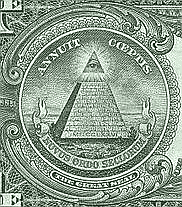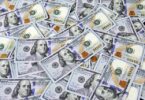aNewDomain — Donald Trump’s fear mongering has masterfully stoked the lingering magma of American paranoia with more gusto than any candidate from a major political party in more than a century. If you find yourself as the lone patriot in a nest of verminous traitors, you’ve succumbed to a very old affliction.
 Trump has so far argued that President Obama was born in Kenya, is really a Muslim, founded Isis with Hillary Clinton, hinted at a Papal plot involving Catholics (an old favorite), questioned the loyalty of Hispanics, questioned the loyalty of African Americans and questioned the loyalty of Muslims. He’s stoked so much residual paranoia among American white, male Protestants that it might not be possible to even catalog all of it.
Trump has so far argued that President Obama was born in Kenya, is really a Muslim, founded Isis with Hillary Clinton, hinted at a Papal plot involving Catholics (an old favorite), questioned the loyalty of Hispanics, questioned the loyalty of African Americans and questioned the loyalty of Muslims. He’s stoked so much residual paranoia among American white, male Protestants that it might not be possible to even catalog all of it.
The 1964 presidential election was perhaps the most recent high water mark of American political paranoia. In the wake of Barry Goldwater’s devastating electoral rout by Lyndon Johnson, historian Richard Hofstadter penned an essay entitled The Paranoid Style in American Politics that described Goldwater’s appeal to fear during the campaign. The essay is as fresh today as it was 54 years ago. Just replace the word “communist” with “Muslim” or “immigrant,” and you’ll see what I mean.
 In fact, I suggest you send a copy of Hofstadter’s essay to every Trump supporter you know, especially the ones who have recently called you “a traitor” or an “ISIS operator.”
In fact, I suggest you send a copy of Hofstadter’s essay to every Trump supporter you know, especially the ones who have recently called you “a traitor” or an “ISIS operator.”
Hofstadter notes that political paranoia has deep roots in America and provided examples that spanned centuries, from fears of Catholic plots, to Mormon schemes, to Masonic plots to Communist infiltration of American institutions; political paranoia is not new.
Of course, there may be a germ of truth behind political paranoia, as Hofstadter notes. Yes, some communists had infiltrated the U.S. government in the 1950s, but there was no vast conspiracy. Yes, there are terrorists in the world who are Muslims, but the vast majority of Muslims have nothing to do with them.
Imagine that Donald Trump declared that the U.S. Navy had been battling an ISIS fleet in the Atlantic since May and that an ISIS battleship had nearly shot down a Delta jet en route to London during one of the battles. In this post factual political era, how many of Trump’s supporters would question the veracity of such a report? Or would it be more comfortable for them to simply conclude that the mainstream media throughout the entire world is eagerly engaged in a cover up?
Hofstadter didn’t believe that political paranoia was necessarily right wing. However, he did believe that the language of political paranoia used in the early 1960s was deployed to manipulate people who felt that “their America” had been “largely taken away from them and their kind, though they are determined to try to repossess it and to prevent the final destructive act of subversion.”
Sound familiar?
For Hofstadter’s paranoiacs the traditional American virtues had already been eaten away “by cosmopolitans and intellectuals; the old competitive capitalism has been gradually undermined, by socialist and communist schemers; the old national security and independence have been destroyed by treasonous plots, having as their most powerful agents not merely outsiders and foreigners as of old but major statesmen who are at the very centers of American power. Their predecessors had discovered conspiracies; the modern radical right finds conspiracy to be betrayal from on high.”
Sound familiar? Those words were written 54 years ago. Today’s boogeyman still involves political plots among politicians but intellectuals and communists have been replaced with Hispanics, African Americans and especially Muslims.
It’s interesting that Trump is using Hispanics to stoke anti-Catholic paranoia more overtly than even Richard Nixon did in the 1960 presidential election against John F. Kennedy, the country’s only Catholic president.
Political paranoia is not unique to America, but it seems to have especially deep roots here and was noted by observers at least as far back as Alexis de Tocqueville.
In this excerpt from a Texas newspaper article in 1855, cited by Hofstadter, replace “Monarchs” with “sheiks,” “Pope” with “Imam” and “Catholic” with “Muslim,” and you’ll see that the style of political paranoia doesn’t change:
“It is a notorious fact that the Monarchs of Europe and the Pope of Rome are at this very moment plotting our destruction and threatening the extinction of our political, civil, and religious institutions. We have the best reasons for believing that corruption has found its way into our Executive Chamber, and that our Executive head is tainted with the infectious venom of Catholicism…. The Pope has recently sent his ambassador of state to this country on a secret commission, the effect of which is an extraordinary boldness of the Catholic Church throughout the United States.”
Political paranoia can be deadly, of course. Every genocide conducted in the past 100 years had its roots in political paranoia.
Hofstadter offered no solution to the problem of political paranoia. He did note that:
“The central situation conducive to the diffusion of the paranoid tendency is a confrontation of opposed interests which are (or are felt to be) totally irreconcilable, and thus by nature not susceptible to the normal political processes of bargain and compromise. The situation becomes worse when the representatives of a particular social interest perhaps because of the very unrealistic and unrealizable nature of its demands-are shut out of the political process. Having no access to political bargaining or the making of decisions, they find their original conception that the world of power is sinister and malicious fully confirmed. They see only the consequences of power-and this through distorting lenses-and have no chance to observe its actual machinery.”
The current election may ultimately amount to a dialog between the rational part of America (left and right) and a core of largely white Americans who feel threatened by nearly everything, prodded on by specialized media that enhances and amplifies their fears. Maybe the entire election process will somehow amount to a conversation that allows this group to reconcile their fears with reality and rejoin the national dialog.
Hofstadter concluded that “We are all sufferers from history, but the paranoid is a double sufferer, since he is afflicted not only by the real world, with the rest of us, but by his fantasies as well.”
For aNewDomain, I’m Tom Ewing.
Photos:
Cover art: Collage by Tom Ewing comprised of Image from the film Quatermass & the Pitt, courtesy of DavidRattigan.com, combined with Donald Trump photograph from The National Memo.
Obama’s Birth Certificate: photo protest by By Bonzo McGrue ( [CC BY 2.0], via Wikimedia Commons
By 911conspiracy – http://www.flickr.com/photos/14638975@N04/1498204910/, CC BY 2.0, https://commons.wikimedia.org/w/index.php?curid=10475855













